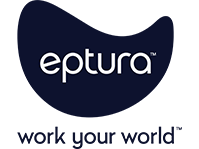In episode 348, host Mike Petrusky speaks with Pendrick Brown, Managing Director for EMEA and Principal at HLW. In a wide-ranging conversation, they talk about the evolving workplace, design practices, and the role of technology in creating innovative and effective spaces. They discuss the top priorities for workplace leaders today and explore hybrid models and the importance of agile and flexible spaces. Brown shares his belief that understanding the unique culture and ethos of each company is essential for creating a design that meets their specific needs and future goals. Human experience and behavior are crucial in workplace design that enhances collaboration, well-being, and serendipitous engagements, while technology, such as artificial intelligence (AI)-infused booking systems and biometric data, can help optimize space usage and improve the employee experience.
Agenda
- Overview of the design firm HLW and Brown’s work creating spaces for the legal sector
- Workplace innovation, impact of technology, and strategies for managing change in the workplace
- Understanding client cultures and the challenges of predicting how people use spaces
What you need to know: Workplace takeaways
Takeaway 1: Understanding a company’s unique culture is crucial for effective workplace design
It’s important to explore and understand an organization’s culture and ethos before you can create a design that truly reflects their needs and aspirations.
“We really want to get under the skin of the company we’re working with to really understand their culture, really understand their ethos,” Brown explains. The approach ensures that the design is not only unique but also future-proofed, catering to the company’s long-term goals and evolving needs.
Brown further explains how HLW’s research and development team, ARC, plays a vital role in this process. “They benchmark all of our projects. So, we really look to try and understand on an industry-by-industry basis as much as we do by the culture of each business place,” he says.
A data-driven approach helps in tailoring the design to the specific requirements and behaviors of the company’s workforce.
Ultimately, a holistic understanding of a company’s unique culture and operations leads to more effective and sustainable workplace designs. “Our clients are always asking us what else is out there, what do other companies do? So, we have that information at our fingertips, but our question back is, we don’t want to tell you what your competitors are doing. We want to learn from you what you’re doing, and then how do we translate that into the best design for your people, your ethos, your culture,” Brown explains.
Takeaway 2: Technology plays a crucial role in enhancing the hybrid workplace experience
There have been significant advancements in technology that have transformed the workplace, particularly in the post-COVID era. Technology is the “heartbeat that keeps us all able to do that kind of work from wherever,” Brown says, pointing to how an AI-backed booking system could enhance collaboration as an example.
“It can tell you that you have a meeting on Tuesday next week, that four of the five people are already going to be there in person, and they’ve booked a room for you that fits six, so that might be the day you choose to go into the office because they’re all going to be there.”
Takeaway 3: Change management in the workplace requires a holistic approach
Predicting how people will use a newly designed space can be complex, so it’s important to have a holistic approach to change management.
“People are strange. They make decisions that you, that you look at and think that flies in the face of all logics, all expectations,” Brown says.
He shared an example of a law firm that designed two different breakout spaces. “One was a library feel, and one had much more soft furnishing, with a more relaxed feel. And no one used the relaxed space because they thought that they might be judged…”
Leadership also has a role in setting the tone for how spaces are used, Brown explains.
“If they see their leaders doing things in a certain way, they know that that’s acceptable or they know that that’s what’s available to them and then they can follow in the same way,” he says.
To effectively manage change, it is crucial to gather and analyze real usage data to inform future designs and strategies. “If we can somehow get distill the data from all of that of how people actually use space cos you’re absolutely right, a survey is very easy to go, I think I should say that, or that’s me today. But actually how they then turn up and use the space is going to be the key for designing how people are going to use it in the future,” Brown says.
Workplace management insights
- Designs should focus on how people interact and behave. They should focus on creating spaces that help people work together, feel good, and connect unexpectedly.
- Technology, particularly AI and data analytics, plays a crucial role in optimizing space usage and supporting hybrid work models.
- The design of wellness rooms can unexpectedly evolve into collaboration spaces, highlighting the importance of flexibility in design.
- Leadership plays a significant role in shaping how employees use and perceive workspaces.
- Biometric data and continuous monitoring can provide valuable insights into how spaces are actually used, enabling better design decisions.
- The key to workplace innovation is staying open to new ideas and technologies while understanding the unique culture and needs of each client.
Discover more workplace research at ARK Strategy and do a deep dive into more workplace insights by exploring all Workplace Innovator podcast episodes





